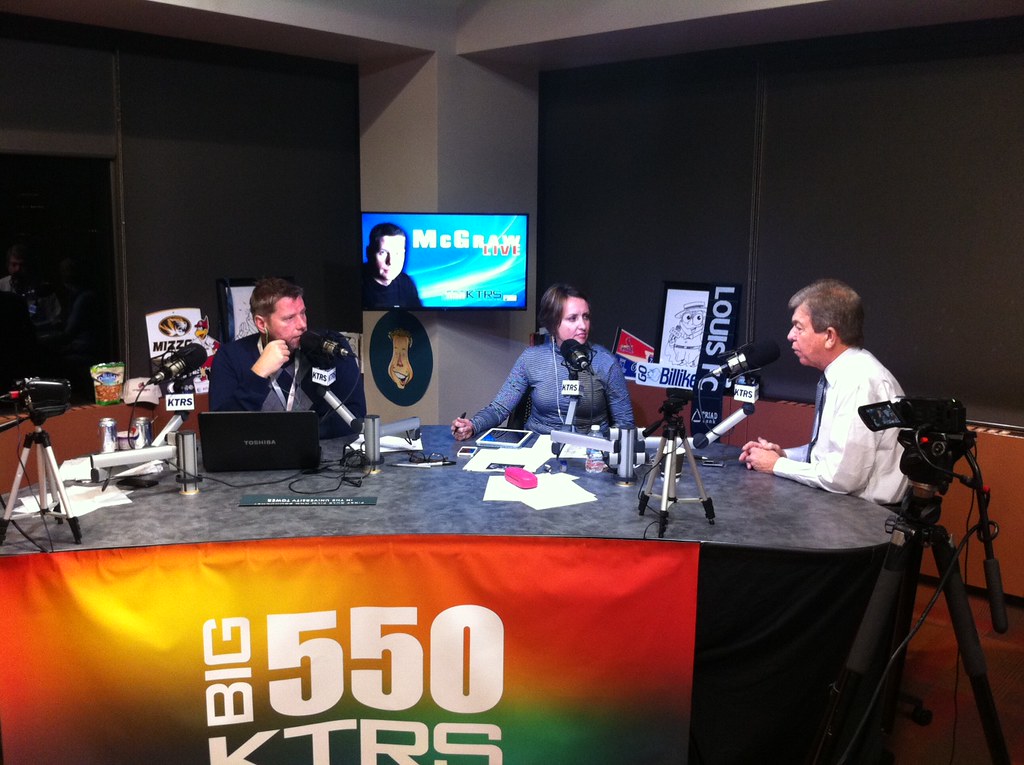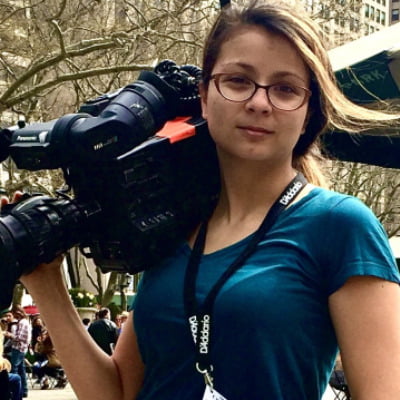BNM Writers
The Numbers Never Matter As Much As People Do
“It’s a never ending cadre of local voices that can be heard on KTRS. All local, all interesting. All supported by local business.”
Published
4 years agoon

I started Barrett News Media very much in the image of our successful Barrett Sports Media brand, which just celebrated its fifth year in business. When I first launched the business it was a one-man operation, but I knew it’d be important to bring outside perspectives on a wide variety of topics to our readers. That’s why I’ve asked so many friends and people who I respect in the business to write guest columns.
These guest columns help teach the audience things that I couldn’t on my own. We were fortunate to have Bo Thompson of WBT get us started, and I’m thrilled to follow it up this week with another great piece from my friend McGraw Milhaven.

McGraw is the PD and host at KTRS in St. Louis. In his column, he shares what he believes are the advantages his station has over local competitors. In a time of consolidation and cost-cutting, a local, independent shop should have a harder time of retaining staff and competing with large corporations with stations across the country, yet McGraw’s station continues to fight the good fight without seismic changes.
According to McGraw, it is being local that gives KTRS the advantages it enjoys in terms of sales and content. The station decided to stop playing the numbers game and just worry about being the best talk station it could be for St. Louis. Enjoy the column!
Jason Barrett
Let me introduce myself, I’m McGraw Milhaven, and I’ve been in radio for 25 years. I’ve worked at some of the biggest radio stations in the country. For the last 13 years or so, I’ve been the morning host for KTRS radio in St Louis.
I have a confession. I have no ratings. In fact, I’m the program director, and the station I program has no ratings.
When I say no ratings I mean nothing, zilch, zero, nothing. We don’t even show up in the “book” or the “diaries”, or the “meters” or whatever the current system is for determining the audience.
Let me explain.
To the best of our memories, about 14 years ago, KTRS, which is family owned, decided the juice of Arbitron/Nielsen was no longer worth the squeeze, so we stopped our subscription. A few years later, we took the “beacon” off of our signal. Now, we don’t even show up as a radio station. Arbitron/Nielsen called over the years and “suggested” it was in our “interest” to place the “beacon” back on our signal and to subscribe. We listened, but in the end, it turned out we were doing just fine on our own.

550 KTRS-AM Radio is owned by local business people, worried that corporate radio was destroying the local voices of St Louis. That was 24 years ago. KTRS hasn’t always been perfect, but it has always been local. How local? Today, in 2020, during a national pandemic, KTRS is local from 5am to midnight, and we are looking to add voices to our lineup.
That’s 19 hours of local. Each show has a co-host, news-room updates, sports reports, varying degrees of board-ops/phone screeners, and producers. Our programming is as diverse as the audience we serve. Our hosts are white, black, married, single, newly married, divorced, farmers, city residents, have children to be born, have new born children, have kids in college, and have kids having grandchildren.
We don’t get caught up in the Liberal/Conservative trap, yet we do talk politics. But there is so much more to life in St Louis. Serious topics, fun topics, family topics, movies, tv shows, history, trivia, sports, local restaurants, bars, local personalities, local professors on national topics, travel agents, newspaper reporters, callers, text-ers, and tv reporters. It’s a never ending cadre of local voices that can be heard on KTRS. All local, all interesting. All supported by local business.
In fact, KTRS radio is looking to add to our lineup, yet, WE HAVE NO RATINGS. How can the big radio companies, with all the ratings, the big fancy toys, and all that “synergy” keep cutting staff and local programming? How can a single, one off local KTRS thrive and the big boys fail? I’m glad you asked, I’ll tell you after a word from some of our live sponsors.
Window World-17 years and counting, John Beal Roofing-16 years and counting, R & R Sanitation-11 years and counting, Boain Dental-10 years and counting, St Louis Closets- 10 years and counting, Outdoor living-10 years and counting, Londoff Chevrolet-9 years and counting. I could go on, like most talk shows hosts who must fill up four hours a day, but you get the point.
There is no greater validation of a radio station than repeat local business, year, after year, after year. They know how much they are spending, they know who is walking in the door, and more importantly, why people are walking in the door.
KTRS has a great line up of well known, trusted, local voices. Great producers/news reporters/sports hosts/traffic and weather reporters that we encouraged and developed, and a seasoned, hardworking, full time sales staff of seven people, all for one radio station.
Many radio salespeople are busy trying to dazzle advertisers with numbers and ratings that few understand, and even less believe are accurate. Our salespeople sell something more valuable and tangible. Our salespeople sell something that is easy to understand, cannot be manipulated, or purchased through a third party rating system. Our salespeople sell something every business understands.

We don’t sell ratings, we sell results.

McGraw Milhaven is a columnist for BNM and the morning host and program director for The Big 550, KTRS in St. Louis. He has been honored by the Missouri Senate for his dedication to improving the lives of Missouri’s citizens, and has appeared multiple times as a guest on CNN, MSNBC, and FOX News. He is originally from Long Island, New York and a graduate of the University of Nebraska-Lincoln. He can be found on Twitter @McGrawMilhaven.
You may like
1 Comment
Leave a Reply
Cancel reply
Leave a Reply
This site uses Akismet to reduce spam. Learn how your comment data is processed.
BNM Writers
Do Radio Leaders Ever Listen to Their Streams? The Results May Suprise You
Listening might be a shocking experience, and not necessarily in a good way. The stream often seems to be the station’s red-headed bastard stepchild.
Published
2 hours agoon
May 13, 2024By
Andy Bloom
I listen to a lot of radio – a lot of radio. To be more specific, I listen to a lot of radio station’s streams and apps.
I often wonder if the people responsible for the content listen to their product on their streams and apps. Probably not. Listening might be a shocking experience, and not necessarily in a good way. The stream often seems to be the station’s red-headed bastard stepchild.
Let’s consider how vital streams are to listenership, revenue, and the most common issues that make listening on radio station digital platforms less enjoyable than listening over the air.
Jacobs Media’s TechSurvey 2024, released just a few weeks ago, is a reminder of how listening is shifting from traditional radios to digital platforms, including computers, mobile devices, and smart speakers.
Here’s a quick refresher on a couple of findings from Jacobs Media TechSurvey. Actual radios are disappearing from homes. In TechSurvey 2018, 83% had a working radio that they used in their home. That’s dropped to 74% in TechSurvey 2024.
Listening on an AM/FM radio is being replaced by streaming, mobile apps, and smart speakers.
The chart below shows the decline in listening on AM/FM radios from 85% in 2013 to under 60% in the past two years. During the same period, listening on digital platforms rose from a meager 14% to 38%. The trend of more listening on digital platforms will undoubtedly continue.

In a perfect world, Nielsen would report broadcast and digital listening in single-line reporting, but the recent spat of first-quarter earnings reports shows why that’s unlikely to happen.
- For Q1-24, Audacy reported radio revenues decreased by 2% while digital revenues were up 10%.
- During iHeart’s Q1 earnings call, the company reported that the Digital Audio Group’s revenues are pacing up high-single digits in the second quarter, with the Multiplatform Group tracking down mid-single digits.
- Saga’s new President/CEO discussed protecting radio’s traditional seven-percent (7%) share of advertising and the steps the company has taken to earn its portion of the 60% of budgets marketers spend on digital advertising.
- In Q1-24, Townsquare Media reported it earned more than 50% of its revenue from its Digital First Local Media strategy for the second consecutive quarter.
Reports like these ensure that the digital platforms and on-air signals will be sold separately for the foreseeable future.
Therefore, treating the digital delivery systems with as much care as the over-the-air product is critical.
A few primary issues plague the majority of radio station streams I hear.
- Levels: The processing takes care of most levels over the air – not so much on the stream. I notice it the most when listening to play-by-play; maybe that’s on the leagues, but who’s responsible for station IDs and rejoins blasting at double the volume of the play-by-play? Typically, the volume of the spots is somewhere in between – although it varies market-by-market, team-by-team.
- Traffic: The stream is important enough to match the traffic logs to the on-air logs. Having spots cut off at various times on the stream to rejoin content or rejoining content in progress should no longer be acceptable.
Programmers and brand managers should ensure that traffic can use promos of varying lengths to match stop-set lengths on-air and on the stream.
- Repetition: Some stations have started to match stop-set lengths. However, some of those stations have a limited number of promos that never seem to change. Create a few more or rotate them in and out.
Radio is a reach and frequency medium. We love clients that run a heavy schedule, just as we repeat the hits.
Nonetheless, there is a point where it becomes ridiculous. To be specific: Hello, MLB. Nearly every game, in every city, repeats the same three spots, in the same order, between every half inning, for every pitching change, and every time-out. Hearing the same stop-set run 25 times (nine innings times two, plus a handful of pitching changes and time-outs – 25 is not an exaggeration, and maybe low) is enough to drive a listener insane. I’m thankful when a board op falls asleep (or is in the bathroom) and the local break (partially) runs.
- Restarts: It’s jarring when a hiccup causes a section of programming to repeat. It happens with a verse or line in a song, a statement repeats, or a game skips back a play or two. I’ve asked why these skips happen but never received an understandable explanation.
None of these examples happen regularly over the air. No programmer would tolerate them, but they occur frequently on nearly every stream I listen to.
Programmers and brand managers should listen to their digital platforms and not just the over-the-air delivery of the content they work so hard to create.
If broadcasters want people to continue listening to their content, as listening continues to move from traditional AM/FM radios to digital platforms, radio stations must clean up the digital listening experience.

Andy Bloom is president of Andy Bloom Communications. He specializes in media training and political communications. He has programmed legendary stations including WIP, WPHT and WYSP/Philadelphia, KLSX, Los Angeles and WCCO Minneapolis. He was Vice President Programming for Emmis International, Greater Media Inc. and Coleman Research. Andy also served as communications director for Rep. Michael R. Turner, R-Ohio. He can be reached by email at [email protected] or you can follow him on Twitter @AndyBloomCom.
BNM Writers
iHeartMedia News/Talk EVP Chris Berry Encouraged By Radio’s Future
“I’m a huge believer in radio and the future of radio because, especially radio, news and sports content, because those are things that are happening right now.”
Published
2 hours agoon
May 13, 2024
While many journalists are the first to record history, there are very few who make history. iHeartMedia’s Executive Vice President of News, Talk, and Sports Programming, Chris Berry is one of the few who have made history during his career.
It’s taken a lot of skill and tenacity to make it to the top. This combined with his warmhearted disposition and belief in journalism made it all possible and it all started in a Florida high school.
“I always wanted to be a newspaper reporter. In fact, when I was in high school I took a test on what your career should be. It said I should either be a newspaper reporter or a cop,” Berry told Barrett News Media over a Zoom call.
Falling short of wanting to risk his life as an officer of the law, Berry took his passion for print news to TV. His first station after graduating college was at the NBC affiliate in Memphis. Just a few years later, “I heard about an opening [as a news writer] at KNX News Radio in Los Angeles. The CBS-owned, all-news radio station.”
Berry paid his own way out west, took a writing test, and later accepted the job. His idea was to get back into TV after a stint at KNX, but his success put him on a different path. “I’ve spent the rest of my career in radio from the time that I started there.”
Spending 14 years in Los Angeles, Berry then Executive Produced in Washington, D.C. He later moved to WBBM in Chicago as Assistant News Director and later, News and Program Director. During the 1996 DNC Convention, Berry met up with a friend who suggested taking a look at ABC News Radio. Heeding the advice, he set off to New York as the General Manager of Operations for ABC News Radio right after the election. He moved up the ranks at the then-newly minted House of Mouse. It was there when the Ole Miss graduate’s career became historic.
While at ABC, Berry was also on the board of the Radio and Television News Directors Association. He played an instrumental role in the airing the first Supreme Court case. “One of the things that I’m very proud of was during the election of 2000, there was a Supreme Court challenge, Gore versus Bush. We petitioned the United States Supreme Court to broadcast that case,” Berry said.
The historic petition had never been done successfully until Berry’s advocacy. Because of his efforts, oral arguments of Supreme Court cases may now be broadcast. The first taped courtroom remarks aired December 12, 2000, when Gore versus Bush was heard.
While at ABC, Berry was awarded News/Talk Executive of the Year by Radio and Records magazine in 2002. Later, Berry and his team won a Peabody Award and a Marconi Award. In 2012, he left Disney for Clear Channel, which would later evolve into iHeartMedia.
“I’ve been doing this for a long time and I’ve watched the news media evolve. Consumers of news now has so many more sources and places where they can get content. I’m a huge believer in radio and the future of radio — especially radio, news, and sports content — because those are things that are happening right now.” Berry said.
He added social media is a great help to the medium grow listeners. “It helps a lot because it is a great way to inform people of something happening. For example, if you have a newsworthy interview or if you have an event happening like a tornado, you can do a push notification through social media and it can actually drive listening.”
As technology changes and evolves, the newsman with a storied career believes it can only help, as long as things like Artificial Intelligence are used responsibly. “[AI] is a terrific tool that radio stations also have to be very careful about how they use it. As it exists today, is only as good as the content that’s being fed into it.”
Berry believes there is nothing better than having a real live person broadcasting nor does he see an AI robot taking to iHeart’s airwaves anytime soon. “It’s moving very fast as a technology, but my company, iHeartMedia, has publicly said we have no intention of using AI to voice any content because it’s just not something that works right now.”
In other words, AI does not make good radio.
“Good radio has to be compelling. Jack Swanson once said, ‘To inform without entertaining is time squandered.’ When you take a look at, especially talk radio, there does have to be a certain amount of entertainment value as you’re providing the information. Especially now, because people’s attention spans are as short as they are.” Berry added, “You can never lose sight of being factual.”
This sense of good radio touches more than just your dial, it affects podcasts, too. “Radio research over the years has often shown when people are asked to describe why they listen to the radio, they say it’s because it’s a friend. It’s the one-on-one relationship that a listener has with the broadcaster.”
Outside of radio, Berry does have some concerns about the future of the industry. “One of the things that scares me, as a citizen really, is the decline of local newspapers, because they are the places that actually go to the school board meetings or the city council meetings and things like that. When you don’t have a watchdog out there, you run the risk of corruption and people taking advantage of the fact that nobody is watching them.”
For those looking to follow in his footsteps, Berry’s advice is simple.
“Don’t sell radio short because it is a very intimate medium. As a result, it has the ability, if you’re a good radio communicator, to really connect with your audience.” Berry went on to say, “Radio really does provide a relationship with the media consumer that I haven’t really been able to find anywhere else. It’s just different.”

Krystina Alarcon Carroll is a columnist and features writer for Barrett News Media.She currently freelances at WPIX in New York, and has previously worked on live, streamed, and syndicated TV programs. Her prior employers have included NY1, Fox News Digital, Law & Crime Network, and Newsmax. You can find Krystina on X (formerly twitter) @KrystinaAlaCarr.
BNM Writers
It’s Time for the FCC to Consider Radical Changes in Broadcasting
The scarcity argument was a product of its time, not envisioning the internet, smartphones, streaming, and podcasts. It’s time to reconsider.
Published
2 hours agoon
May 13, 2024By
Ed Cohen
Anyone in our business has to be on top of what happens at the Federal Communications Commission, the FCC. When I was a young operations manager at a station, my guess was that my tombstone would say “prize, chance, consideration” because those were the keywords for any kind of on-air contesting.
Recently, I was thinking about the role of the FCC today and whether that role should be as all-encompassing for broadcasting as it has been since the Commission’s founding in 1934. The FCC was the successor to the Federal Radio Commission(FRC) which existed from 1927 to 1934. The FRC was primarily set up to “police” the airwaves such that radio stations would be licensed and that signals would not have undue interference, a major problem prior to the Radio Act of 1927. The Radio Act also introduced the concept of “public interest, convenience, or necessity”.
When the Communications Act of 1934 was passed, that law added common carrier (telephone) to the new FCC’s oversight. For many decades, this worked. One can argue with some of the FCC’s decisions over the years, but broadcast stations were licensed, interference was kept to a minimum, and the FCC appeared to move with the times. Well, maybe not with AM stereo, but that’s a separate discussion.
Beyond signal interference, there was another important reason for the FCC to exist, the concept of scarcity. Especially in the analog days, spectrum space was limited and a license from the FCC had great value. Given that you couldn’t start a radio station without federal approval (ignoring pirate stations), the concept of a limited number of “voices” in the marketplace was relevant. And while newspapers were not regulated, scarcity was an issue there as well and the Newspaper Preservation Act of 1970 allowed for combinations of papers to keep multiple papers in some markets afloat.
Now it’s 2024 and the question struck me of whether we need the FCC’s broadcasting oversight today beyond limiting interference between stations or approving new technologies like HD Radio or digital broadcasting. We know that over-the-air radio listening has been decreasing for some time; just look at Nielsen data. There’s no need to cite all the reasons her as you could probably name half a dozen in under 15 seconds. Yet the FCC and for that matter, Congress, still appear to adhere to the scarcity paradigm.
Think about the FCC restrictions that exist today regarding radio: ownership caps, use of language, who owns the station and their personal behavior, foreign ownership beyond 20%, and more. Yet, any foreign-owned company can set up streaming in the US that sounds just like a local radio station. In fact, if they wanted, the foreign entity could do local radio, just not on the air with an FCC license (and yes, the FCC has granted a couple of very minor exceptions to this rule).
Changing the 25% foreign ownership rule doesn’t mean a Russian oligarch will buy iHeart or Kim Jong Un will pick up Cumulus. The Committee on Foreign Investment in the United States (CFIUS) could review the investments. In other words, don’t expect Ryan Seacrest or Elvis Duran to be replaced by the all-new “Putin in the Morning” show.
Language amazes me. It seems that most of the streamed video that I see contain more “F-bombs” than I can remember using in conversation, perhaps enough to make a longshoreman blush. I watched Succession and was amazed at how many ways you can twist the word “f—.” The other day, a new movement was announced called “Just F—ing Vote.” When I saw it in the trade press, the F-word contained dashes, but if you go to Fuse TV’s website, you can see it in full, although the logo and the merch use a check mark between the “f” and the “ing”.
My podcast use is limited, but when I try one (usually a hockey or baseball show from The Athletic), I’m confronted with words George Carlin highlighted more than 50 years ago. No, the “f-word” isn’t used as much as “like”, “kind of”, “so”, and “basically”, but it doesn’t add anything to my understanding of why a coach made a player a healthy scratch in the last game. Why not let radio stations say whatever they want? Most won’t as some amount of their audiences would be offended, but the words are everywhere else, so WTF? The next Howard Stern might stay in broadcast radio!
Then there is ownership in general. Are we really worried about who owns the stations and how many they own in today’s world? We’ve already heard the market speak with the laundry list of bankruptcies: iHeart, Audacy, Cumulus, Alpha, and more and we’re probably not finished yet.
I’m not suggesting the FCC is the only cause as debt service combined with market downturns played a bigger role, but we’re talking about competing with the likes of Netflix, Amazon, Apple, and more, companies that could buy the entire radio industry without blinking! And while Spotify is not exactly a money machine, first quarter 2024 revenue was over $3.6 billion. That’s one quarter, folks.
My focus has been on radio, but we know that local television isn’t doing well either. Fortunately for them, political money rains down every two years or so in many markets to keep them going combined with cable retransmission fees, but I’m reading too many articles about dependency on local news that is not as successful as it once was.
Like most of you, I still love radio and like many of you, I started back in the days of broadcast scarcity. The scarcity argument was a product of its time, not envisioning the internet, smartphones, streaming, and podcasts. It’s time to reconsider.
Let’s meet again next week.

One of the radio industry’s most respected researchers, Dr. Ed Cohen writes a weekly column for Barrett News Media. His career experiences include serving as VP of Ratings and Research at Cumulus Media, occupying the role of VP of Measurement Innovation at Nielsen Audio, and its predecessor Arbitron. While with Arbitron, Cohen spent five years as the company’s President of Research Policy and Communication, and eight years as VP of Domestic Radio Research. He has also held the title of Vice President of Research for iHeartMedia/Clear Channel, and held research positions for the National Association of Broadcasters and Birch/Scarborough Research. Dr. Ed always enjoys hearing your thoughts so please feel free to reach him at [email protected].















Martin Dekom
September 29, 2020 at 11:19 pm
Good stuff, Mac.